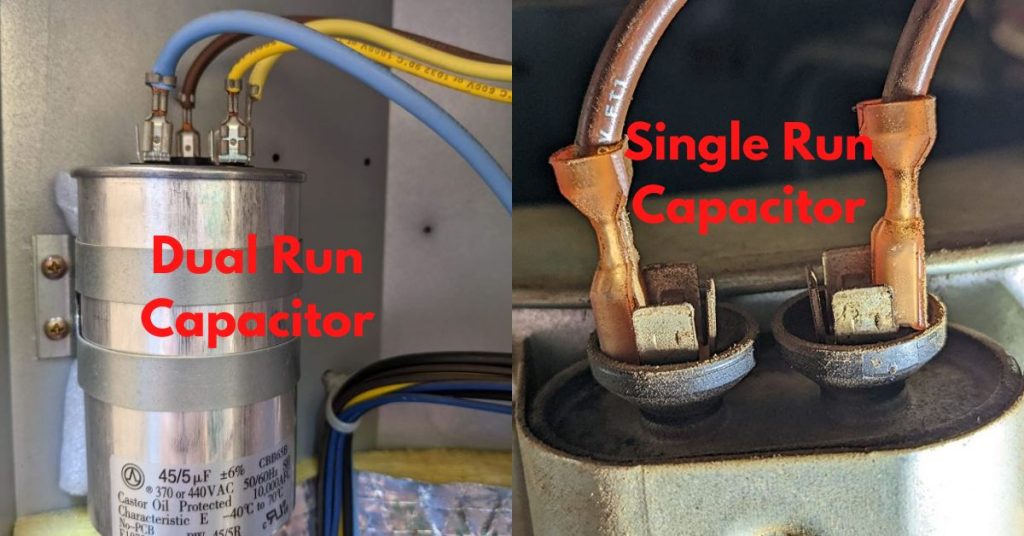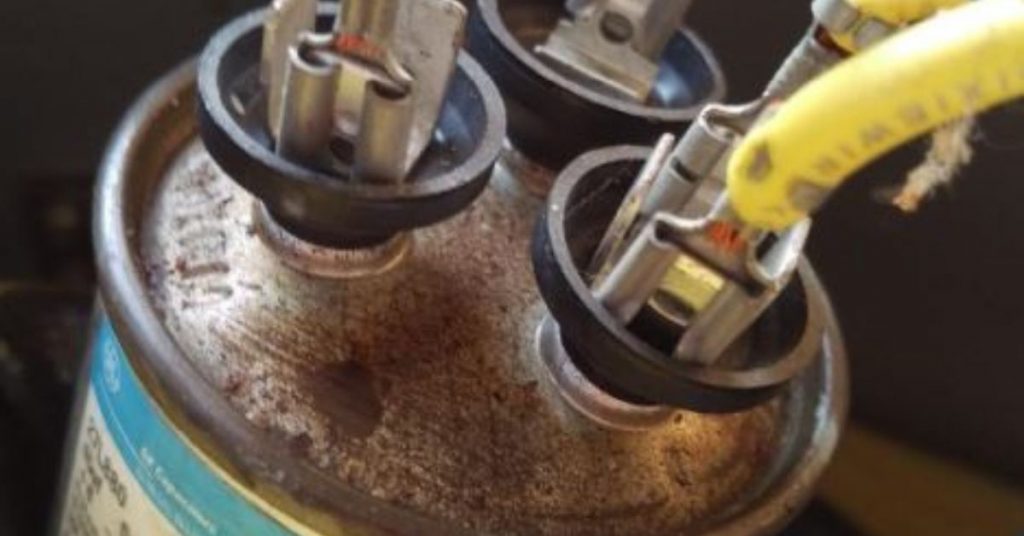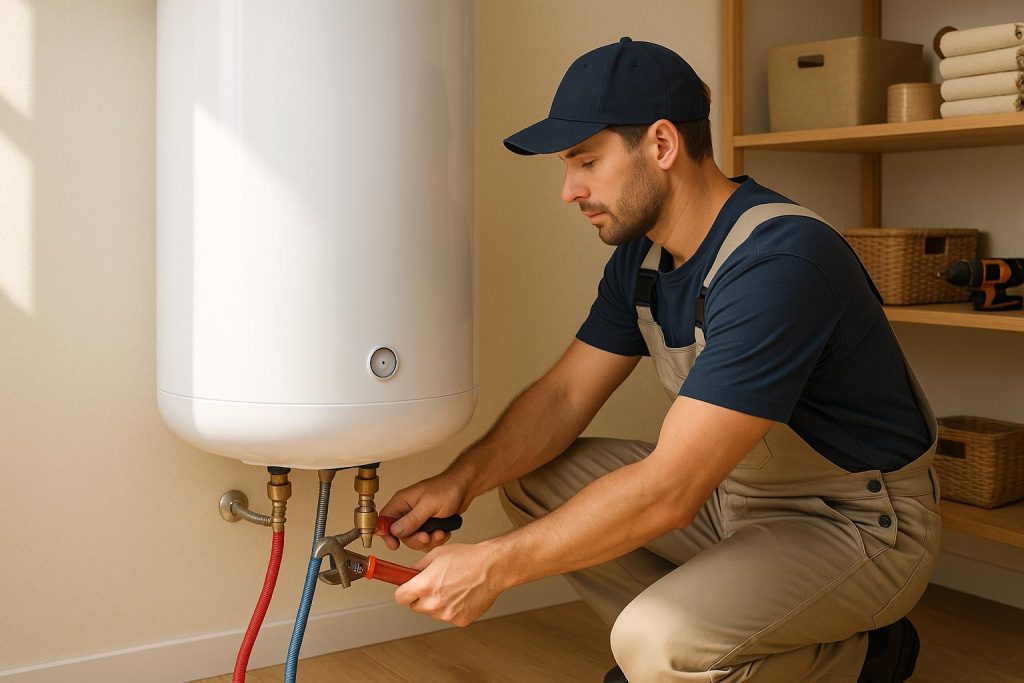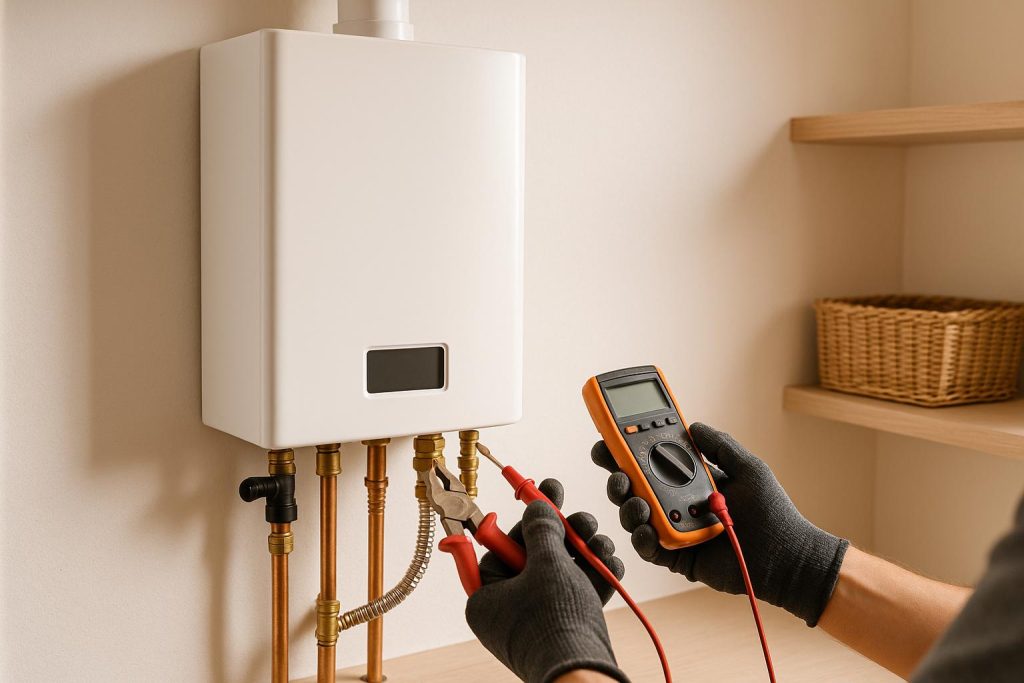
Dual run capacitors are essential components in many air conditioning and HVAC systems. They serve a dual purpose by providing electrical boosts to both the compressor and the fan motor. These capacitors are designed to improve the efficiency and performance of these critical AC components.
Key points about dual run capacitors:
- Two Capacitors in One: Dual run capacitors have two separate capacitance ratings within a single unit. One rating is for the compressor, and the other is for the fan motor. This design allows them to support multiple electrical functions within the AC system.
- Compressor Support: The compressor in an air conditioning system requires a significant amount of electrical energy to start and run efficiently. The compressor side of the dual run capacitor provides the necessary electrical boost for this component.
- Fan Motor Support: The fan motor is responsible for circulating air through the AC system. The fan side of the dual run capacitor supplies the electrical energy required to start and operate the fan motor smoothly.
- Improved Efficiency: Dual run capacitors enhance the overall efficiency of the AC system by ensuring that both the compressor and the fan motor receive the necessary electrical assistance to operate effectively.
- Common Capacitance Values: These capacitors come in various capacitance values, typically ranging from 5 microfarads (μF) to 80 μF, depending on the specific requirements of the AC unit.
- Replacement and Maintenance: Over time, dual run capacitors can fail, leading to AC system issues. When replacing a dual run capacitor, it is crucial to match the capacitance values and voltage ratings precisely to the original unit. Regular maintenance and inspection can help identify issues with these capacitors before they cause system failures.
- Safety Precautions: When working with dual run capacitors, it is essential to discharge them safely to prevent electrical shock. Always turn off power to the AC unit and follow proper safety procedures when handling electrical components.
Features of Dual Run vs Single Run Capacitors
The easiest way to tell a dual capacitor from a single run capacitor is through the terminals. While a single run capacitor has only 2 terminals, a dual run capacitor has 3 terminals.

Another thing about dual run capacitors is that they have 2 capacitance readings. With a single run compressor motor capacitor, the capacitance will be something like 45 microfarads. However, dual run capacitors will have something like 45/5 microfarads.
In the above case, the 45 microfarads is the capacitance of the compressor side of the capacitor while the 5 microfarads is the capacitance of the fan side of the capacitor.

To tell if you a dual run or 2 single capacitors, turn off power to your AC unit and remove the outside units side/cover panel. If you see one capacitor with 3 terminals at the top, you have a dual run capacitor. 2 terminals mean you have 2 single capacitors.
With a dual run capacitor, both sides of the capacitor will not always fail at the same time. It is not unusual to test the capacitor and find that the compressor side is good while the fan side is bad or vice versa.
If any side of the dual capacitor has failed, you will need to replace the capacitor. That is however not the same with single run capacitor.
With single run capacitors, if one capacitor has failed but the other one is good, you can opt to just replace the bad capacitor. However, replacing both is a better option (especially if you have hired an HVAC technician) since capacitors are cheap but technicians are expensive, and it will be just a matter of time before the other capacitor fails as well.
A good HVAC technician will even recommend replacing both single run capacitors with a dual run capacitor. In future, it will be cheaper and easier to replace one capacitor instead of two.
How to Check and Identify a Dual Run Capacitor
As I had mentioned, the capacitor will be located in the air conditioner’s outside unit. To make the unit safe to work on, start by turning off power to the unit (breaker box will be on the wall next to the unit or inside the house) and also turn off the thermostat.
Follow the following steps to find out if you have a dual run or single run capacitor:
- Confirm power to the AC has been turned off
- Use a screwdriver to remove the outside unit’s cover panel. With the cover out, you should now see the capacitor which will most likely be a cylindrical or oval component with a shiny exterior.
- Check if there are 3 terminals at the top of the terminals or there are just 2. If there are 3 terminals, you definitely have a dual run capacitor.
- On the other hand, if you have 2 capacitors each with 2 terminals then you have single run capacitors.
While at it, you may want to check if your air conditioner is good or bad. That can be done visually or through testing with a multimeter.
Without touching the capacitor, check if the top of the capacitor is bulging or swollen. Also, check if the capacitor is leaking out a fluid. Those are clear signs of a bad capacitor.

If none of those signs are present but you suspect the capacitor is bad, the only way to confirm it is by testing.
- Discharge the capacitor first. The capacitor could be storing a high charge and you therefore need to discharge it otherwise it can shock you. While grabbing the insulated handle of a screwdriver, short the common and HERM terminals and then the common and FAN terminals.
- Set your multimeter to the capacitance (MFD) setting.
- Place the 2 multimeter probes on the common and HERM terminals and note down the multimeter readings. Next place the probes on the common and FAN terminals and note down the readings as well.
Usually, the capacitor allows for a margin, which is usually plus or minus 6% of the given capacitance. You therefore expect the capacitance of the capacitor to be between 94% and 106% for both the compressor and fan side.
If the readings are out of that range it means that you have a bad capacitor which you should replace.
While replacing a capacitor, it is important that you replace it with another one of the same capacitance as the old one. Apart from capacitance, voltage is another critical rating in capacitors.
Your dual capacitor will be rated between 370 and 440 volts. It is also critical to ensure that you replace the capacitor with another of the same voltage.
Note: With capacitor voltage, you can go higher but not lower. For instance, you can replace a 370 volts capacitor with a 440 volts capacitor but not vice versa.
To replace the capacitor, just disconnect the wires and strap from the old capacitor and put in the new one the exact same way. If you can’t trust yourself to remember how the wires were connected in the first place, it is best to first take a picture before disconnecting them.
Dual run capacitors can be cylindrical or oval in shape. The shape doesn’t matter so much as long as you a replacing the capacitor with another of the same rating. Quality matters though.
And that is everything about dual run capacitors. I hope that by now you know exactly what dual capacitors are, how they work and how different they are from single run capacitors.





